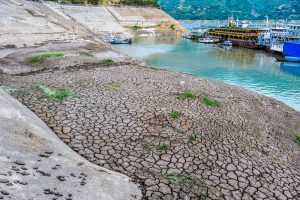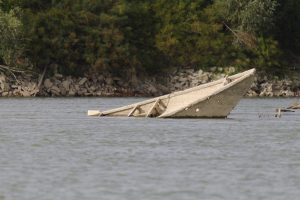It’s the summer of 2022, and an almost-dry Po River runs through northern Italy. There hasn’t been any rain in nearly four months, and, on average, temperatures are nearly 4-degrees warmer than usual. This unparalleled drought, the most severe over the past two centuries, is likely a manifestation of the effects of global warming.
Not only can one see extended riverbanks and cracked, dehydrated soil in Italy, but droughts of this magnitude are happening everywhere. For example, Brazil and China share concerns about the lack of water, but droughts are offering a rare chance to rediscover forgotten secrets. These are but a few of the many countries whose severe droughts are revealing artifacts of history’s past.
The Po, Italy’s largest river, is so low that a sunken World War II barge used by the Germans and a long-lost WWII German half-track have been uncovered by subsiding water levels. The barge, known as the Zibello,transported supplies during the war before it sank in 1943. The 164-foot-long boat is the most visible it has ever been. The German half-track vehicle, previously lost after being pushed into the river by retreating German troops in 1945, has also been found and recovered.
Historic droughts are taking their toll on the world’s largest tropical ecosystem, Brazil’s Amazon rainforest. Scorching temperatures have reduced the Rio Negro, the world’s largest blackwater river, to a trickle. This uncommonly arid season poses a threat to the residents, indigenous communities, animals and plant life living in the Amazon. Many depend on these now-dried waterways for food, supplies, medication, water and access to healthcare. The drought has also revealed prehistoric rock carvings believed to be between 1,000 and 2,000 years old. The engravings can now be seen at recently uncovered riverbanks at Ponto das Lajes near the Rio Negro River.

Record-high temperatures across China have reduced the Yangtze River to a level so low that 600-year-old Buddhist statues can now be seen. These statutes date back to the Qing and Ming dynasties and have brought new tourism to the area. These discoveries are a result of China’s worst drought on record. The river’s levels have become so low that it is affecting the country’s hydroelectric power. With these reminders of climate change’s impact, the global droughts of recent years highlight the need for the underlying causes of climate crises to be addressed. While these droughts have inadvertently unveiled hidden historical treasures, they highlight the fragility of our ecosystems and water resources. By using these lessons to foster resilience and sustainability, future crises can be mitigated. These droughts not only uncover our past, but also provide a call to safeguard our future.

